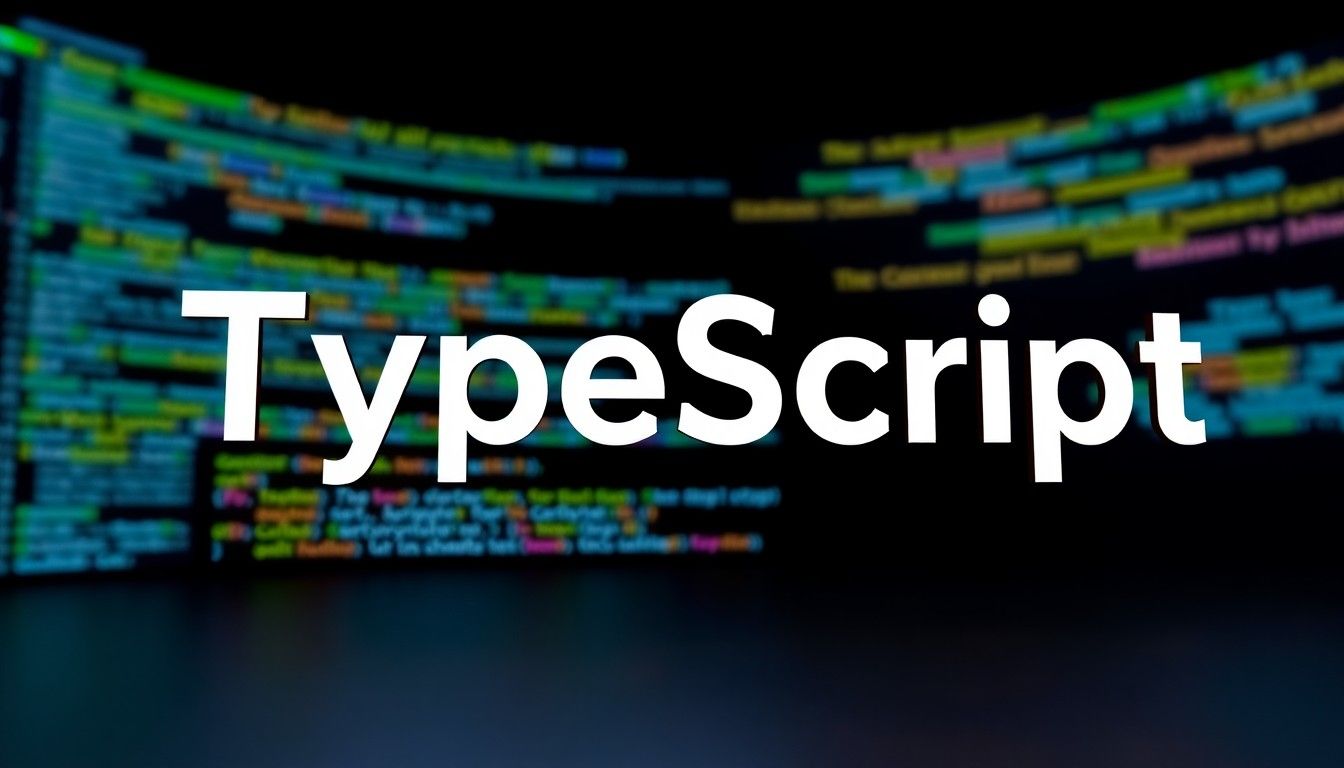Advanced Custom Webflow Development: Techniques to Elevate Your Website Design

Custom Webflow development unlocks powerful possibilities. It goes beyond templates to create truly unique digital experiences for your brand. Real estate professionals particularly benefit from custom approaches that showcase properties effectively.
Standard templates often fall short for businesses with specific needs and unique selling propositions. Custom development fills this gap by tailoring every aspect of your website to your exact requirements and audience expectations.
In this comprehensive guide, we'll explore advanced custom Webflow development techniques that can transform ordinary websites into exceptional digital experiences. These insights apply especially to real estate professionals seeking distinctive online property showcases.
Understanding Custom Webflow Development
Custom Webflow development extends beyond the platform's standard capabilities. It involves writing custom code, creating unique interactions, and developing tailored systems. This approach delivers websites specifically designed for your business needs rather than forcing your requirements into pre-built templates.
Webflow powers over 4.1 billion monthly page views across its ecosystem. (Source: My Codeless Website) This massive scale demonstrates the platform's reliability for businesses of all sizes. Custom development leverages this robust foundation while adding personalized elements that make your site unique.
What Separates Custom Development from Templates
Template-based websites offer speed and convenience. Custom development provides deeper benefits that extend beyond mere appearance. Understanding these differences helps you make informed decisions about your website approach.
The following table highlights key differences between template and custom Webflow development approaches:
Initial Development Time:
- Template Approach: Days to weeks
- Custom Development: Weeks to months
Cost Investment:
- Template Approach: Lower upfront costs
- Custom Development: Higher initial investment
Brand Uniqueness:
- Template Approach: Limited differentiation
- Custom Development: Complete visual uniqueness
Functional Flexibility:
- Template Approach: Predetermined features
- Custom Development: Unlimited customization
Long-term Adaptability:
- Template Approach: Often requires eventual rebuild
- Custom Development: Built for scalable evolution
This comparison shows why custom development, while requiring more initial investment, often provides better long-term value for businesses with specific needs or growth plans.
When to Choose Custom Development
Not every project requires custom development. Small businesses with straightforward needs might find templates sufficient. Understanding when to invest in customization helps allocate resources wisely.
Consider custom Webflow development when:
- Your brand requires distinctive visual identity that sets you apart from competitors
- Standard templates cannot achieve your design vision or functional requirements
- Your business has unique processes that need specific digital workflows
- You need seamless integration with existing business systems or specialized tools
- User experience is critical to your conversion goals and business success
For real estate businesses, these considerations often apply due to the importance of visual presentation and the need for property-specific functionality that standard templates rarely provide effectively.

The Business Case for Custom Webflow Solutions
Custom development represents a significant investment. Smart business owners need to evaluate its potential return carefully. The benefits extend beyond aesthetics to impact core business metrics that drive growth and profitability.
Webflow's e-commerce capabilities have grown exponentially, with a 647.81% increase in active stores (from 1,598 to 11,950) between 2020-2023. (Source: Popup Smart) This growth reflects businesses finding significant value in the platform's customizable features and commerce options.
ROI of Custom Webflow Development
The return on investment from custom development comes through multiple channels. These benefits compound over time to justify the initial expense and create ongoing business advantages.
Let's examine the key ROI factors for custom Webflow development:
Conversion Rate:
- Impact of Custom Development: Tailored user journeys and optimized conversion paths
- Business Outcome: Higher percentage of visitors becoming leads or customers
Brand Perception:
- Impact of Custom Development: Distinctive visual design and premium user experience
- Business Outcome: Increased perceived value and brand authority
User Engagement:
- Impact of Custom Development: Interactive elements and personalized content delivery
- Business Outcome: Longer session times and deeper site exploration
Lead Quality:
- Impact of Custom Development: Improved qualification processes and targeted messaging
- Business Outcome: Better-qualified prospects entering your sales pipeline
Maintenance Costs:
- Impact of Custom Development: Properly structured custom code and modular design
- Business Outcome: Reduced long-term maintenance expenses
A Rakuten case study demonstrated that custom Webflow development led to a 12.7% increase in pageviews and 27.9% lower bounce rates. (Source: AUQ) These improvements highlight the tangible engagement benefits of thoughtful customization.
Scalability and Growth Benefits
Custom Webflow development provides a foundation for future growth. Well-structured custom sites adapt to changing business needs without requiring complete rebuilds as your company evolves.
Webflow's infrastructure handles over 10 million API requests per hour, supported by robust AWS architecture including 2PB of S3 storage and 650K metrics/hour monitoring. (Source: Webflow) This scalability ensures custom solutions can grow with your business demands without performance degradation.
For real estate businesses specifically, scalability means being able to easily add new property listings, expand into new markets, or integrate additional services without outgrowing your website infrastructure.
Essential Custom Webflow Development Techniques
Effective custom development requires specific technical approaches. These techniques enable developers to create distinctive experiences while maintaining the reliability and ease of management that makes Webflow valuable.
Successful custom development begins with understanding Webflow's core capabilities. Then, it extends them strategically with custom code and advanced configurations.
Custom CSS and JavaScript Implementation
Webflow's Designer provides visual CSS control for basic styling. Custom development takes this further through direct code access that enables advanced design techniques and interactions.
Best practices for custom code implementation include:
- Use the Custom Code section in site settings for global scripts and styles
- Implement page-specific code when functionality is only needed on certain pages
- Keep JavaScript modular and well-commented for easier maintenance
- Minimize render-blocking resources to maintain performance
- Test performance impact of custom code additions across devices
Webflow serves 3.5 million designers and teams across 190 countries with diverse design needs. (Source: Store Leads) This global usage demonstrates the platform's versatility for creating engaging interfaces across industries and applications.
Creating Advanced Interactions and Animations
Animations and interactions create memorable user experiences. Custom development unlocks animation potential beyond Webflow's native Interactions panel through JavaScript and advanced CSS techniques.
When implementing custom interactions, focus on these key aspects:
Scroll-triggered animations:
- Implementation Method: Intersection Observer API or GSAP
- Best Use Case: Revealing content as users scroll through the page
Cursor-following elements:
- Implementation Method: Custom JavaScript tracking mouse position
- Best Use Case: Creating immersive cursor effects that enhance brand personality
3D transformations:
- Implementation Method: CSS 3D transforms with custom JavaScript
- Best Use Case: Product showcases and property visualizations
Page transitions:
- Implementation Method: Barba.js or custom transition code
- Best Use Case: Creating seamless movement between different site sections
Parallax effects:
- Implementation Method: CSS variables or JavaScript parallax libraries
- Best Use Case: Adding depth to page sections and visual interest
For real estate websites, these animation techniques can transform standard property listings into engaging experiences that keep potential buyers exploring your properties longer.
Building Custom CMS Templates
The Webflow CMS offers powerful content management capabilities out of the box. Custom development enhances these capabilities through specialized templates that perfectly match your content needs.
Dynamic CMS templates enable auto-generated SEO metadata, significantly improving search visibility for content-heavy websites. (Source: Flow Ninja) This capability helps maintain consistent optimization across large collections of properties or blog content.
For real estate websites, custom CMS templates allow for sophisticated property listing designs that can include:
- Custom filtering systems based on property attributes
- Location-based search functionality
- Automatic image galleries with optimized loading
- Dynamic pricing displays that update from external databases
- Integrated appointment booking for property viewings
Implementing Advanced Integrations with Webflow
Integration capabilities significantly extend Webflow's native functionality. Custom development enables seamless connections with external services and tools that create a cohesive digital ecosystem around your website.
Modern websites rarely operate in isolation. They connect with various business systems to create efficient workflows and enhanced user experiences.
CRM and Marketing Tool Integrations
Customer data powers effective marketing and sales processes. Custom Webflow development connects your site to your customer management systems for seamless lead handling.
Webflow supports API and webhook integration with various CRMs and payment processors, enabling advanced business functionality beyond standard form submissions. (Source: EMD Digital) These integration capabilities allow businesses to create connected systems rather than isolated websites.
Examples of effective real estate CRM integrations include:
Lead Routing Systems:
- Functionality: Automatic assignment of property inquiries to appropriate agents
- Business Benefit: Faster response times and better lead management
Email Marketing Platforms:
- Functionality: Segmented property alerts based on visitor browsing behavior
- Business Benefit: Targeted follow-up that increases conversion rates
Customer Journey Tracking:
- Functionality: Monitoring prospect interactions across website and communications
- Business Benefit: More personalized sales approach based on demonstrated interests
SMS Notification Systems:
- Functionality: Instant alerts for new inquiries or scheduled viewings
- Business Benefit: Improved response rates and customer experience
E-commerce Customization Options
E-commerce functionality benefits significantly from customization. Tailored shopping experiences increase conversion rates and average order values through streamlined purchasing processes.
Among Webflow stores, top business categories include Internet Products (14.3%), Business & Industrial (12.9%), and Computers (8%). (Source: BuiltWith) This diverse adoption illustrates Webflow's versatility across business types and product categories.
For real estate professionals, e-commerce customization might include specialized payment systems for deposits, booking fees, or property document purchases.
Third-Party API Integration Techniques
APIs connect your website to external services and data sources. Effective integration requires careful planning and implementation to maintain performance and reliability.
With 4,795 Webflow sites integrating with Shopify, businesses are clearly leveraging hybrid solutions that combine Webflow's design capabilities with specialized tools. (Source: Sign House) This integration approach allows businesses to use the best tool for each specific function.
For real estate websites, valuable API integrations often include:
- Mapping services for interactive property location displays
- Property database connections for automated listing updates
- Mortgage calculators with current interest rate data
- Virtual tour platforms for immersive property experiences
- Calendar systems for scheduling property viewings
Optimizing Performance in Custom Webflow Sites
Performance affects user experience and search rankings. Custom development must prioritize optimization alongside unique features to ensure the site performs well for all users.
A well-optimized custom site loads quickly, responds instantly to user interactions, and works flawlessly across all devices and connection speeds.
Page Speed Optimization Strategies
Page speed directly impacts user engagement and conversion rates. Custom development includes specific techniques to maintain speed despite added functionality and rich media content.
Key speed optimization approaches include:
- Minimizing and compressing custom code to reduce file sizes
- Optimizing image delivery and formats using next-gen formats like WebP
- Implementing lazy loading for below-the-fold content
- Reducing third-party script impact through asynchronous loading
- Utilizing efficient animations that don't block rendering
Studies show that 96% of Webflow stores use Cloudflare for content delivery, highlighting the importance of robust infrastructure for performance optimization. (Source: Webflow) This widespread adoption demonstrates how performance-focused solutions complement custom development.

SEO Enhancement Through Custom Development
Custom development enables advanced SEO strategies that go beyond Webflow's built-in SEO features to address specific ranking factors for your industry and target keywords.
Webflow sites include built-in XML sitemaps and 301 redirect management, providing a solid foundation for technical SEO work. (Source: Netguru) These built-in capabilities can be extended through custom development to create even more powerful SEO solutions.
Advanced SEO enhancements through custom development include:
Structured Data Markup:
- Implementation Method: Custom JSON-LD implementation for specific content types
- SEO Benefit: Rich snippets in search results with higher click-through rates
Advanced Metadata Templates:
- Implementation Method: Dynamic metadata generation based on content attributes
- SEO Benefit: More relevant title tags and descriptions for each page
Internal Linking Automation:
- Implementation Method: Programmatic relevant link insertion based on content analysis
- SEO Benefit: Stronger site architecture and topic relevance signals
Performance Monitoring:
- Implementation Method: Custom analytics implementation for Core Web Vitals tracking
- SEO Benefit: Ongoing optimization based on real user experience data
For real estate websites, these SEO enhancements can dramatically improve visibility for location-based searches and property-specific queries.
Mobile Optimization Techniques
Mobile experiences require special attention to detail. Custom development ensures optimal performance on all screen sizes and devices through responsive design best practices.
Mobile optimization goes beyond basic responsive design to address specific mobile user behavior patterns and technical considerations:
- Touch-friendly interface elements with appropriate sizing and spacing
- Streamlined mobile navigation designed for smaller screens
- Optimized media loading for varying connection speeds
- Mobile-specific features like click-to-call and location-based content
- Device-specific testing across popular phone and tablet models
With 92.2% of Webflow stores implementing Apple Pay, there's clear recognition of the importance of mobile-friendly payment options. (Source: Otakoyi) This adoption rate underscores the growing focus on mobile optimization across the platform.
Custom Webflow Solutions for Real Estate
Real estate presents unique website requirements. Custom Webflow development addresses these specific needs through specialized features designed to showcase properties effectively and generate quality leads.
The real estate industry relies heavily on visual presentation and emotional connection. Custom development enhances property showcases beyond standard approaches to create truly compelling digital experiences.

💻 Let us help you create a stunning online showcase for your projects that works seamlessly across all devices. Ready to amplify your real estate business? 👉 Explore AmplyViewer now
Interactive Property Showcases
Standard property listings often fail to engage potential buyers effectively. Interactive elements create more compelling property presentations that hold attention and drive inquiries.
During 2024 Q4, Webflow stores experienced 21% year-over-year growth, indicating increasing adoption for business applications including real estate. (Source: Flow Ninja) This growth reflects the platform's increasing capability to handle specialized business requirements through custom development.
Effective interactive property showcase features include:
Dynamic Floor Plans:
- Implementation Approach: Interactive SVG layouts with room highlighting
- Buyer Benefit: Better understanding of property layout and flow
Before/After Sliders:
- Implementation Approach: Custom JavaScript image comparison tools
- Buyer Benefit: Visualization of renovation potential or seasonal changes
Neighborhood Exploration:
- Implementation Approach: Interactive maps with points of interest
- Buyer Benefit: Assessment of location amenities and convenience
Light/Dark Visualization:
- Implementation Approach: Time-of-day property lighting simulations
- Buyer Benefit: Understanding of natural light patterns throughout the day
Virtual Tours and 3D Visualization Integration
Virtual property experiences reduce the need for physical visits during initial property research. Custom Webflow development integrates advanced visualization tools seamlessly into your website experience.
Interactive visualization tools like AmplyViewer offer immersive property experiences beyond static images or basic videos. This approach helps buyers better understand spatial relationships and property potential before scheduling in-person viewings.
The integration process for 3D visualization typically involves:
- Capturing property data using specialized photography or 3D scanning
- Processing the visual assets into interactive formats
- Creating seamless embedding in the Webflow environment
- Optimizing the experience for both desktop and mobile users
- Adding interactive hotspots or information points within the visualization
Lead Capture Optimization for Property Sites
Converting visitors into leads is crucial for real estate success. Custom development optimizes this process through strategic form placement and design that balances information gathering with user experience.
Is Webflow easy to use for creating effective lead generation systems? While the platform offers user-friendly basics, custom development allows for sophisticated lead capture optimization that dramatically improves conversion rates.
Advanced lead capture strategies for real estate websites include:
- Progressive form techniques that gather information incrementally
- Property-specific inquiry forms that pre-populate listing details
- Behavioral targeting based on browsing patterns and interests
- Saved property collections that encourage account creation
- Automated follow-up sequences triggered by specific site actions
Custom Webflow development transforms standard websites into powerful business tools for real estate professionals. It balances technical capability with design flexibility to deliver truly unique digital experiences that convert visitors into qualified leads.
The investment in custom development pays dividends through improved performance, better user engagement, and stronger brand differentiation. For real estate businesses specifically, these benefits translate directly to better lead quality and higher conversion rates.
While choosing Webflow for your next web design project offers numerous advantages, the platform's true power emerges through thoughtful custom development that addresses your specific business needs.
As web technology continues to evolve, the power of Webflow integrations and custom development will continue offering competitive advantages. Businesses that leverage these capabilities position themselves for lasting digital success in an increasingly competitive online landscape.
Ready to explore how custom Webflow development could transform your real estate website? Contact us to discuss your specific needs and discover the possibilities of a truly customized web presence.


